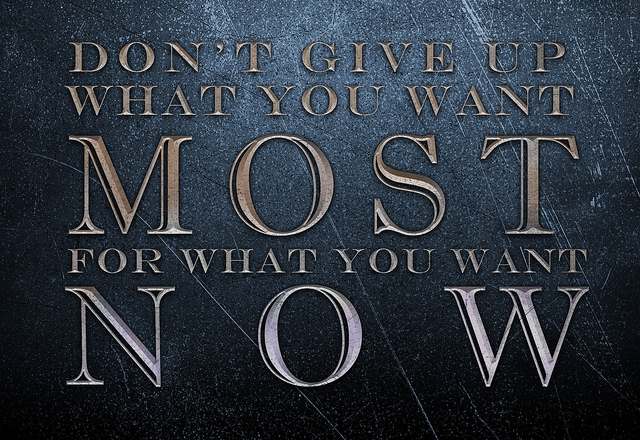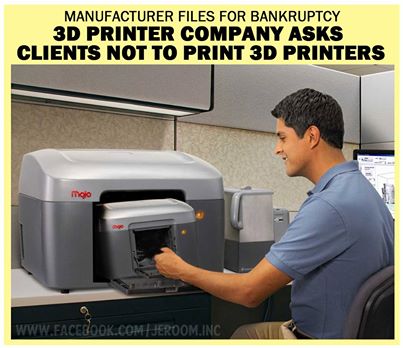|
|
|
Wednesday, June 20th, 2018

I read two articles yesterday. They both focus on how the long-term thinking of Jeff Bezos and Marc Benioff inform their decision making and are well worth your reading.
Bezos is famous for ignoring Wall Street for Amazon’s first two decades.
When it comes to making the most important and the most long-term decisions, Bezos has a simple rule that’s quite useful: “Focus [your vision] on the things that won’t change.”
At Amazon, this means that everything is built around their value of customer obsession.
Benioff has a different approach to making decisions, but still based on the long-term vision he embedded in Salesforce’s culture from the day of founding.
I came back with a clear vision of what the future of the internet was going to be in regards to software-as-a-service and cloud computing. I also had a much deeper sense of my spiritual self. So I said, “When I start a company, I will integrate culture with service.”
When I started Salesforce, on March 8, 1999, I said we’re going to put one percent of our equity, product and time into a foundation and create a culture of service within our company. We’ll be creating new technology, the cloud; we’ll be creating a new business model, subscription services; and we’ll create a culture built on philanthropy.
Last month Warren Buffett, Jamie Dimon and a legion of executives came out publicly against Wall Street’s short-term focus.
The emphasis on quarterly earnings, and the importance of beating estimates, is warping American business and the economy, argue almost 200 CEOs who belong to the Business Roundtable, a lobbying organization. Short-term thinking leads corporations to choke back on hiring, and to starve research and development of the spending the fuels long-term growth. The pressure of quarterly earnings is one reason fewer companies are interested in going pubic, preferring the slower growth that comes with being private than the scrutiny that comes with being listed.
Wall Street’s short-term thinking never got a toe-hold at either Salesforce or Amazon, but the reasons it didn’t created significantly different cultures.
While Benioff’s obsession culminates in giving back, Bezos’ obsession comes at a substantial cost to Amazon warehouse workers, the environment and even society.
Image credit: Scott Ellis
Posted in Culture, Personal Growth, Role Models | No Comments »
Thursday, April 24th, 2014
Ease of replication will destroy your business.

Hat tip to KG Charles-Harris for sending this.
Image credit: Jeroom.Inc
Posted in Entrepreneurs, Just For Fun | No Comments »
Tuesday, March 25th, 2014

Lou Gerstner (IBM) says it best, “I came to see, in my time at IBM, that culture isn’t just one aspect of the game—it is the game.”
Dick Clark (Merk), Rex Tillerson (ExxonMobil), Robert Iger (Disney) and Steve Jobs (Pixar) all agree, as do a host of other bosses.
There’s no getting around it—everything comes down to culture.
The millions of dollars spent developing strategy provide no value unless the strategy is implemented.
“I wouldn’t say that their strategies are useless, but if they added a separate ‘people’ process on the strategy process they would be a lot more effective.” That process is execution, which many consultants and academics have largely ignored because it is seen as merely tedious detail.
Culture embodies more than a company’s values; it embodies the company’s ability to execute.
Too many bosses treat building culture also as tedious detail—exciting to visualize and discuss, but procrastinating the hard work required to create and sustain it.
Bosses who ignore the tedious details jeopardize their careers and put their companies at risk.
Flickr image credit: Max Klingensmith
Posted in Culture, Ducks In A Row | No Comments »
Wednesday, July 24th, 2013
 When Microsoft announced its much ballyhooed new strategy and resulting management changes I commented that you can’t change culture, especially an intentionally siloed culture, by edict. When Microsoft announced its much ballyhooed new strategy and resulting management changes I commented that you can’t change culture, especially an intentionally siloed culture, by edict.
I didn’t go into what seemed to me a strategy with a serious lack of solid content; these days we all know that not only is content king, but the it’s source of authenticity.
I assumed that it was my unwillingness (boredom) to read the analysis offered by media, let alone Steve Ballmer’s actual long-winded statement to the Microsofties, that made me miss it.
As has been said over and over by experts, “culture eats strategy for lunch” (breakfast, in come cases), and while clear communications is as great a focus for me as culture, I just couldn’t make myself read it.
Fortunately, Wally Bock at Three Star Leadership has more patience and he offered some great analysis and comments, which are reposted below with his kind permission.
Microsoft and the Strategy of Everything
On July 13, 2013, Microsoft’s CEO, Steve Ballmer sent a lumbering, poorly edited, 2600 word email to Microsoft employees, announcing the company’s new strategy. As awful as the memo was, the strategy is worse.
When I read some of the news accounts, I felt like I was experiencing an updated version of Akira Kurosawa’s classic, Rashomon. In that film, people who participate in the same event each describe it differently. In this case, news organizations that got the same information each describe Microsoft’s new strategy differently.
The New York Times wrote about how “Microsoft Overhauls, the Apple Way.” The Wall Street Journal looked at the same announcement and said that “Microsoft Shake-Up Aims to Speed Products.” And the Mercury News told us that “Microsoft unveils major overhaul in effort to focus on mobile.”
Those very different reports sent me to the Microsoft site and the text of Steve Ballmer’s email. There, he tells us that “We are rallying behind a single strategy as one company.” Sounds good. And what might that single strategy be? Here goes.
“Going forward, our strategy will focus on creating a family of devices and services for individuals and businesses that empower people around the globe at home, at work and on the go, for the activities they value most.”
Try reading that without taking a breath or tripping over tangled syntax. Doesn’t exactly have the ring of “A PC on every desk and in every home” does it?
As I interpret it, Microsoft will make products and provide services which they will sell to individuals and businesses in the US and other countries. Egad! Is there anything Microsoft has chosen not to do?
There’s no focus at all. Being everything to everyone is usually a pretty sure way not to be much of anything to anybody.
And there’s nothing to fire up the passions that drive engagement. Would you really leap out of bed in the morning all charged up to “focus on creating a family of devices and services for individuals and businesses?”
This is not a strategy to build long term, sustainable competitive advantage. It is a strategy for rotting slowly from the inside out.
Thanks, Wally.
Flickr image credit: Masaru Kamikura
Posted in Communication, Culture, Strategy | No Comments »
Tuesday, March 10th, 2009
 The great thing about this this blog is that I have the luxury and pleasure of taking a longer view in one of the most turbulent economic times since World War II over fifty years ago, as I’ll be doing over the next few weeks. The great thing about this this blog is that I have the luxury and pleasure of taking a longer view in one of the most turbulent economic times since World War II over fifty years ago, as I’ll be doing over the next few weeks.
Globally, we are seeing seismic shifts in trade flows, financial relationships, business fundamentals, and the balances between people, governments, and business. In many ways we are corks bobbing about in these economic tidal waves.
However, we are corks with intelligence and capability. While we cannot change the tidal waves, we can and should understand them in order to improve our own lives and the lives or our co-workers and friends.
A long view can provide understanding and perhaps some enjoyment in the understanding. But it is also valuable to connect that long view back to the here and now, to address the question “What do I do about it?”
In this article I address the fundamental shifts occurring in employment models in the United States, tracing the roots of the “lifetime” employment model that emerged in the aftermath of World War II. That model has crumbled and the new models are only now appearing.
Tying this long-term trend back to today, we look at two companies pioneering new employment models.
The Old Model—Lifetime Guarantees
Since World War II large US companies offered an amazing, lifetime employment agreement to their workers. This lifetime agreement had three planks:
- Lifetime employment at the same company
- Lifetime health care
- Lifetime retirement
Following World War II, the United States represented only about 5% of the world’s population, but controlled over 95% of the world’s economic activity. The economic infrastructures of Europe, Russia, and Japan had been destroyed. These countries had also lost almost an entire generation of young men, further crippling their economic activity and recovery.
American companies competed only with each other, and completely dominated the global economic landscape. Several factors—tax structures, unions, and a very limited government—led companies to take over the responsibility for health care and worker retirement planning. Since American companies competed primarily with each other only, they could offer the “lifetime employment” agreement mentioned above.
Today the world has changed. The United States still represents about 5% of the world’s population, but controls only about 25% of the global GDP. American companies compete with the
- EU, where governments have taken over the responsibility for health care and retirement, and
- emerging countries, where no one takes responsibility for the workers’ health care and retirement.
American companies can simply no longer afford to offer the three benefits of lifetime employment – job, health care. Some new models are emerging, but they themselves will change as the global economy continues to shift.
The New Model—Just-in-Time Workers, Do-it-Yourself Benefits
The new employment model is just-in-time, do-it-yourself. Companies now acquire workers just-in-time, shifting their employment burden to independent contractors and outsource service providers. Workers, even the direct employees, are responsible for their own healthcare and retirement planning. Indirect payroll costs for direct employees will climb significantly in the next ten years, so companies will continue to reduce their direct employee base and increase their use of contractors and outsource providers.
Example—Building Contractor Restructures for Cash Flow
A Texas building contractor I’ll call TexHomes provides a good example of a “new model” small business. In this post we will focus on his employment model, saving the business model for later discussion.
TexHomes sharpened the company’s focus on restoring foreclosed houses—traditional single family residences, typically restoring about 50 homes each month.
With the sharpened focus, TexHomes needed fewer subcontractors, primarily painters, carpet layers, and maintenance people. With the steady volume and a smaller number of subcontractors he experimented with direct employees, planning for improved control.
But the costs and paperwork escalated rapidly, and the company lost considerable freedom in other areas (retirement contributions, health plans, vacations, etc.). So the company switched back to a subcontractor model for almost all of its workers, even though it provides them with full-time work. Currently the company has a very tight work team:
- Employees – 3 people. CEO/owner, Business Manager/co-owner, Accountant (CEO’s wife)
- Independent Subcontractors – 12 people. All the trade workers are independent subcontractors.
- Outsourced Services – every other function. The company uses an independent accounting service, an independent HR service, and independent maintenance service for all company equipment.
With only three direct employees, this company qualifies as a small business, thus reducing its regulatory compliance burden. In addition, the company operates from a home office, further reducing its operational expenses. Since the three direct employees are also owners, the company can coordinate employee benefits to maximize total cash flow to the owner/employees.
The company generates over $20 million in annual revenue with a pre-tax profit margin exceeding 35%. While it may be a small business, it generates considerable cash for its owners and workers.
Unlike the construction industry, many businesses do not have a long tradition of independent subcontractors. However, you may want to consider how you can apply some of these lessons to your business.
Posted in Business info, Compensation, Culture, Retention, Strategy | 1 Comment »
Monday, April 14th, 2008
Image credit:Ken Meador
If you have a soapbox you’ll understand the thrill that comes from finding others who have the same one.
My soapbox is corporate culture and those who walk their talk (AKA practice what they preach) and I just read about another guy ensconced on that box.
 His name is Ken Meador and his company is $14 million/ 52 employee TWR Lighting Inc. His name is Ken Meador and his company is $14 million/ 52 employee TWR Lighting Inc.
To start with, he agrees with a passionate belief I’ve pushed for more than two decades—having everyone in the company involved in interviewing candidates.
“It educates people about how to interview. Eventually, they are going to grow up and take over positions, and they need to go through this process for professional reasons. It also gives them a sense of ownership. They know that they are empowered and that their opinion means something.”
Yes!
Authority and responsibility go hand in hand.
“I’m a firm believer in explaining to people what my expectation is. How they do that and how they utilize their resources with other people to achieve that expectation, that’s part of learning and becoming more self-reliant. That’s part of empowering them. When I don’t tell them how to do that, I’m allowing them to work at their own pace and to really think outside the box on their own. That’s what creates really influential employees who learn from their mistakes and move on.”
Yes!
Secrets kill culture; everyone in the company should know the good, the bad and the ugly.
“How you create that culture comes down to beating a steady drum, creating openness and having candor. I’m not afraid to discuss problems with my employees any more than I’m glad to give them the good news.”
Yes!
I’ve preached this ’till I’m blue in the face and some still don’t get it.
“I manage a lot by walking around…That familiarity helps level the playing field…Anything that will help build camaraderie and an openness so that they know my door is always open for them and, even as president, they can come talk directly to me if they so desire.”
Yes!
Finally, a public declaration of both business and cultural mission with one line that really stands out.
“How we accomplish our mission is as important as the mission itself.”
Now the big question—does all this culture and empowering stuff pay off?
Seems like it—revenues increased $4.5 million between 2004 and 2006 among other things.
Want to hear more direct from the horses mouth? Ken shared some of his thoughts on TWR and business over at Leadership Turn today and agreed to share more of his MAP (mindset, attitude, philosophy™) in the future here as his time permits, so stay tuned.
What does your corporate culture soapbox look like?
Posted in Business info, Communication, Culture, Hiring, Leadership, Retention | 1 Comment »
Monday, April 7th, 2008
Image credit: laughlin
 There’s a lot content out there right now on how to recession-proof your company. Most of the advice is good and much of it is similar, but… There’s a lot content out there right now on how to recession-proof your company. Most of the advice is good and much of it is similar, but…
Yeah, you knew there’d be a ‘but’.
It all revolves around stuff that should have been happening all along under the categories of good business practices, long-term strategy and positive corporate culture and driven in part by the historically taught lessons that business is cyclical and what goes up must come down.
Companies are being told to focus on innovation and superb customer service, among others, but neither is a turnkey system that can be ordered and installed.
When done suddenly, these actions may come over as panicky when you need them to reek of authenticity.
I’m not saying don’t do them, but be aware that if you just slap them on the surface with no preparation and expect them to work they’re unlikely to produce the results you want.
So this week I thought we’d talk about how to implement the ones most likely to move you forward—that way your company will do more than just survive, it’ll thrive.
Posted in Business info, Communication, Culture, Leadership, Motivation | No Comments »
|
 Subscribe to
Subscribe to
MAPping Company Success
About Miki 
Clarify your exec summary, website, etc.
Have a quick question or just want to chat? Feel free to write or call me at 360.335.8054
The 12 Ingredients of a Fillable Req
CheatSheet for InterviewERS
CheatSheet for InterviewEEs™
Give your mind a rest. Here are 4 quick ways to get rid of kinks, break a logjam or juice your creativity!
Creative mousing
Bubblewrap!
Animal innovation
Brain teaser
The latest disaster is here at home; donate to the East Coast recovery efforts now!
Text REDCROSS to 90999 to make a $10 donation or call 00.733.2767. $10 really really does make a difference and you'll never miss it.
And always donate what you can whenever you can
The following accept cash and in-kind donations: Doctors Without Borders, UNICEF, Red Cross, World Food Program, Save the Children
*/
?>About Miki
About KG
Clarify your exec summary, website, marketing collateral, etc.
Have a question or just want to chat @ no cost? Feel free to write
Download useful assistance now.
Entrepreneurs face difficulties that are hard for most people to imagine, let alone understand. You can find anonymous help and connections that do understand at 7 cups of tea.
Crises never end.
$10 really does make a difference and you’ll never miss it,
while $10 a month has exponential power.
Always donate what you can whenever you can.
The following accept cash and in-kind donations:
|







 When Microsoft announced its much ballyhooed new strategy and resulting management changes I commented that you
When Microsoft announced its much ballyhooed new strategy and resulting management changes I commented that you  The great thing about this this blog is that I have the luxury and pleasure of taking a longer view in one of the most turbulent economic times since World War II over fifty years ago, as I’ll be doing over the next few weeks.
The great thing about this this blog is that I have the luxury and pleasure of taking a longer view in one of the most turbulent economic times since World War II over fifty years ago, as I’ll be doing over the next few weeks. His name is
His name is  There’s a lot content out there right now on how to recession-proof your company. Most of the advice is good and much of it is similar, but…
There’s a lot content out there right now on how to recession-proof your company. Most of the advice is good and much of it is similar, but…
